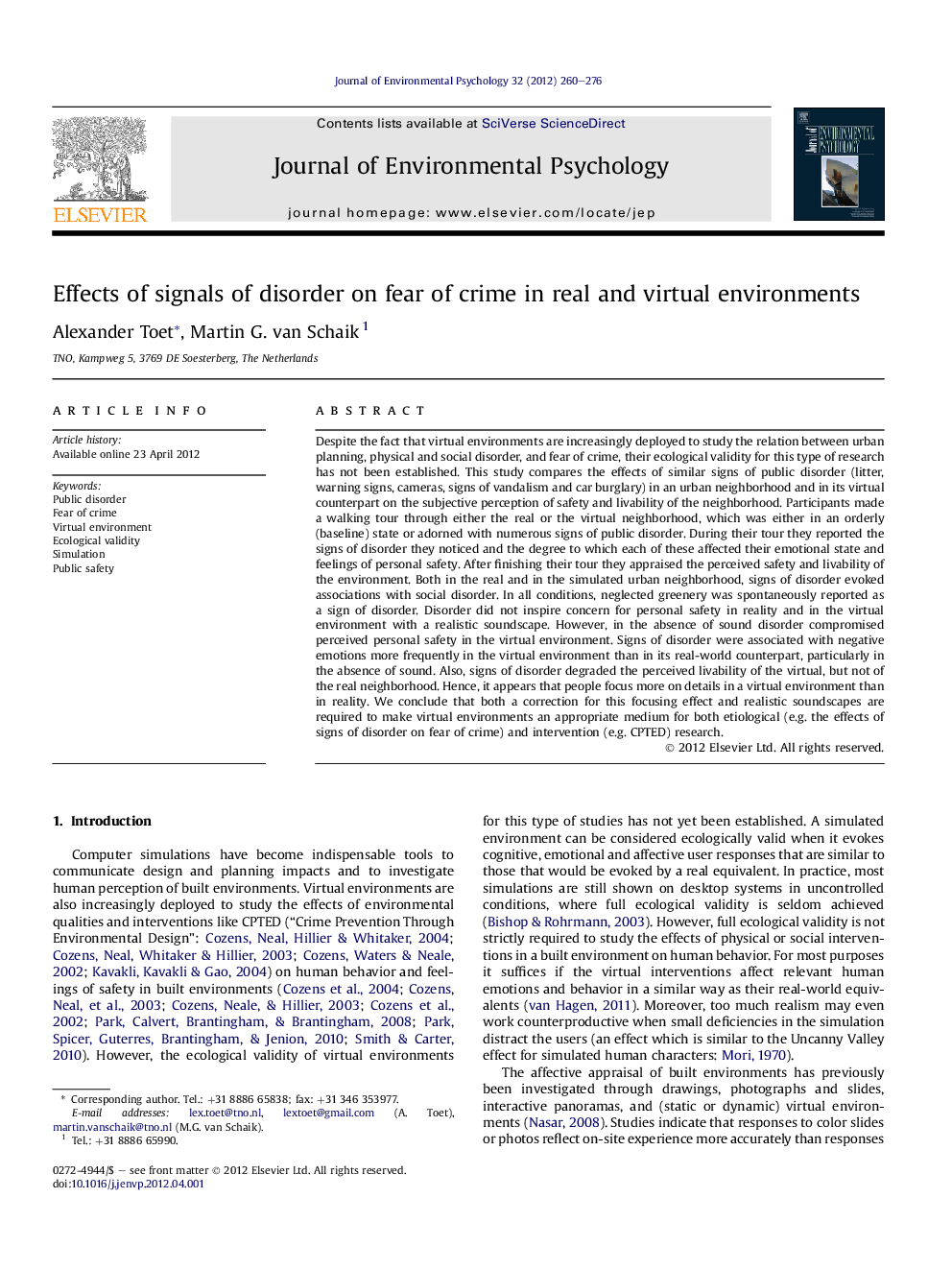| کد مقاله | کد نشریه | سال انتشار | مقاله انگلیسی | نسخه تمام متن |
|---|---|---|---|---|
| 885714 | 912839 | 2012 | 17 صفحه PDF | دانلود رایگان |

Despite the fact that virtual environments are increasingly deployed to study the relation between urban planning, physical and social disorder, and fear of crime, their ecological validity for this type of research has not been established. This study compares the effects of similar signs of public disorder (litter, warning signs, cameras, signs of vandalism and car burglary) in an urban neighborhood and in its virtual counterpart on the subjective perception of safety and livability of the neighborhood. Participants made a walking tour through either the real or the virtual neighborhood, which was either in an orderly (baseline) state or adorned with numerous signs of public disorder. During their tour they reported the signs of disorder they noticed and the degree to which each of these affected their emotional state and feelings of personal safety. After finishing their tour they appraised the perceived safety and livability of the environment. Both in the real and in the simulated urban neighborhood, signs of disorder evoked associations with social disorder. In all conditions, neglected greenery was spontaneously reported as a sign of disorder. Disorder did not inspire concern for personal safety in reality and in the virtual environment with a realistic soundscape. However, in the absence of sound disorder compromised perceived personal safety in the virtual environment. Signs of disorder were associated with negative emotions more frequently in the virtual environment than in its real-world counterpart, particularly in the absence of sound. Also, signs of disorder degraded the perceived livability of the virtual, but not of the real neighborhood. Hence, it appears that people focus more on details in a virtual environment than in reality. We conclude that both a correction for this focusing effect and realistic soundscapes are required to make virtual environments an appropriate medium for both etiological (e.g. the effects of signs of disorder on fear of crime) and intervention (e.g. CPTED) research.
► Signs of disorder evoked associations with social disorder, both in a real and in a virtual neighborhood.
► Disorder evoked more negative emotions in a virtual environment than in reality.
► Disorder degraded the perceived livability of a virtual, but not of a real neighborhood.
► Disorder compromised perceived personal safety in a soundless virtual environment.
► This effect did not occur in reality and in a virtual environment with sound.
Journal: Journal of Environmental Psychology - Volume 32, Issue 3, September 2012, Pages 260–276